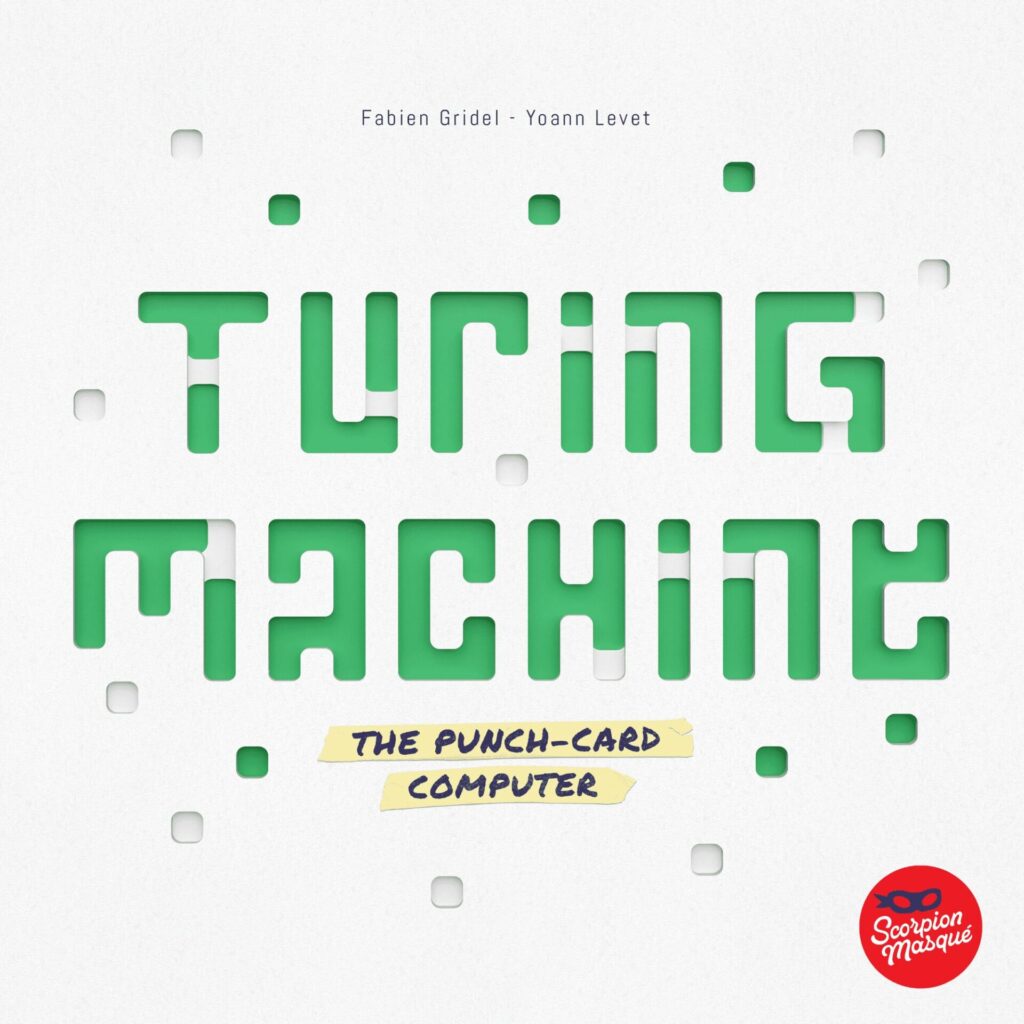How To Play: Turing Machine – Setup, rule summary and strategy
Embark on a strategic journey with 'How To Play Turing Machine', crucially embracing gameplay mechanics, developing effective clue interpretation strategies, and perfecting the hypothesis testing process. Exciting and educational, this game will challenge your logic and problem-solving skills at every turn as you aim to win.

Overview
Welcome fledgling codebreakers to your essential primer on ‘How To Play Turing Machine.’ Venturing beyond the basics, we’ll unravel not just the game rules but entwine ourselves within cunning strategies to notch those wins. Rest assured, by extracting kernels from our discussion on optimal decoding, effective pattern recognition, and sharp hypothesis testing, victory is no longer enigmatic. So enkindle your computational spirits, strategists are born here.
What’s in the box
- 1 Rulebook
- 1 Machine Board
- 50 Puzzle Cards
- 108 Testing Tokens
- 1 Turing Token
- 34 Solution Tiles
- 2 Secrecy Screens
- 4 Player Aids
- 1 Solution Board
How To Play Turing Machine: Rules Summary
Setting Up the Game
Before you dive into Turing Machine, you’ve got to prepare the cybernetic playing field. Let me walk you through the setup I personally found straightforward and efficient.
- Place the main board in the center.
- Sort the puzzle cards by difficulty, then randomly draw one and place it in the board without revealing the solution.
- Distribute clue tokens and input markers among the players.
- Ensure each player has a reference guide nearby.
Gameplay Mechanics
Gameplay is a whirlwind of hypotheses and logical deduction. Here’s how it goes down: Step into my last game night to get a feel for the pulse of Turing Machine.
- Choose one player to overcome the first puzzle.
- Draw clue cards that guide towards the solution.
- Discuss theories and possible solutions with your team.
- Enter guesses on the board, and learn whether you’re correct or not.
Victory Conditions
Winning in Turing Machine feels incredibly rewarding, especially with the whole team cheering. The victory is collective; here’s how we threw our hands up in triumph.
- Unravel the logic puzzle completely by accurately identifying the hidden number.
- Verify your solution against the hidden number to confirm your collective genius.
Special Rules & Conditions
Now, the devil’s in the details of the special rules and conditions that can make or break your game.
- Clue cards must be used as they are drawn; strategy is key.
- Guesses are limited, so make them count to avoid lockdown.
- Error markers signal missteps, gather enough, and it’s game over — a lesson we learned the hard way.
- Prenatural insight or mere logic? Power cards can offer a special one-off ability to peek, skip, or replay, so use them wisely.
Best Turing Machine Strategies
Mastering the Core of the Code: Turing Machine Mechanics
Grasping the core mechanics in ‘Turing Machine’ is paramount. Firstly, understanding how to read clues is foundational; each bunch offers a peek into the machine’s logic. Next, experiment actively with the available levers each turn. Think of them as your keys to unlock the machine’s secrets. Don’t be afraid to play around.
Decoding Clues Swiftly
- Identify patterns within the bits.
- Remember, no guesswork, use logic.
Strategic Lever Manipulation
- Approach each lever methodically.
- Assess outcomes from subsequent reveals.
Persistent Logical Analysis
- Maintain a clear hypothesis.
- Adjust strategies with each new piece of information.
Decipher with Precision: Mastering Clue Analysis in Turing Machine
Grasping the subtleties of clue interpretation is crucial in ‘How To Play Turing Machine’. Always begin with clear, logical deduction. Here’s how:
- Categorize clues to identify patterns and contradictions.
- Examine each clue in isolation to formulate potential solutions.
- Draw connections between clues to construct a coherent understanding of the solution.
- Cross-reference clues to rule out incompatible options.
- Test partial solutions against remaining clues for affirmation.
Assess Clue Categories
Analyze Individually
Synthesize Clue Relationships
Eliminate Impossibilities
Iterative Testing
Mastering the Art of Hypothesis Testing in Turing Machine
To reign supreme in Turing Machine, one must refine their hypothesis testing technique. Now, let’s dive into an efficient approach:
Start with Broad Assumptions
- Formulate a general hypothesis about the hidden rule.
- Prioritize versatile codes that reveal key insights.
Analyze Feedback Systematically
- Decipher the feedback to solidify your understanding.
- Adapt your next codes based on this precise feedback.
Refine with Narrow Testing
- Narrow down variables by altering a single element.
- Track consistent results to confirm or refute your thinking.
Initially, developing a feel for the right hypothesis can be daunting. Yet, with every successive game of Turing Machine, you’ll start seeing patterns. Believe me, there’s nothing quite like that ‘aha!’ moment when the hidden logic clicks, thanks to a well-thought-out testing process.
Mastering the Machine: Key Takeaways
Throughout this guide, we’ve tackled the intricate nuances of “Turing Machine”, ensuring players stand the best chance at securing a victory. Remember, the pivot to winning lies in grasping the mechanics, optimally interpreting clues, and mastering an efficient hypothesis testing system. Let these insights fuel your strategies and transform your gameplay experiences. As always, don’t forget that board games are a landscape of fun and intellect—may you find joy in every round of puzzling and code-cracking adventures with “Turing Machine”!
Want to know what we think of Turing Machine? Read our detailed review of Turing Machine here

